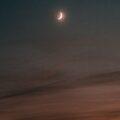Whereas the west is devoid of any bright stars, the east has a handful of bright ones that are visible even under polluted urban skies. However, two of the brightest are relatively close to us, within our spiral arm, while the third is far, far away.
You will see three stars forming a large triangle in the eastern sky. The “highest” star is Vega from the constellation Lyra (the harp), and low down in the southeast is Altair of Aquila (the eagle). These are our neighbours. The left, or northern, star is Deneb of Cygnus (the swan). It’s a whopping 2,600 light-years away. Its light started on its journey toward us at the time of Pythagoras and the development of the first democracy in Athens. These demonstrate the 3D character of the night sky.
Jul 1 Last-quarter moon
Jul 2 Venus in front of Beehive star cluster (Cancer)
Jul 4 Mercury max elongation (eve)
Jul 9 New moon
Jul 15 Saturn rises in SE at 10 p.m.
Jul 16 Scorpius (Antares) on meridian at 10 p.m.
Jul 17 First-quarter moon
Jul 20 Sun enters Cancer
Jul 23 Full moon
Jul 26 Jupiter rises in east at 10 p.m.
Jul 31 Last-quarter moon






One of Canada’s foremost writers and educators on astronomical topics, the Almanac has benefited from Robert’s expertise since its inception. Robert is passionate about reducing light pollution and promoting science literacy. He has been an astronomy instructor for our astronauts and he ensures that our section on sunrise and sunset, stargazing, and celestial events is so detailed and extensive it is almost like its own almanac.













